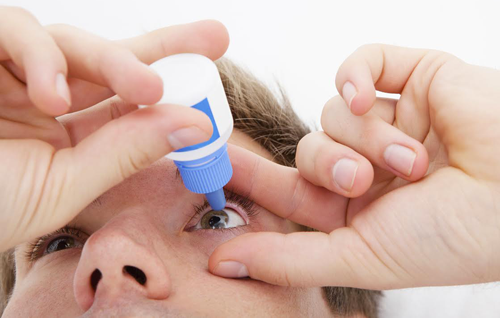
For the first time in 20 years, patients suffering from the eye disease glaucoma may soon have new treatments as several young companies look to shake up the $5.6 billion global market
There is no cure for glaucoma, which damages the optic nerve and is expected to affect more than 4 million Americans by 2030, up from 2.7 million today. But treatments help patients manage the disease and may prevent the onset of blindness.
The new treatments promise to improve outcomes and reduce side-effects associated with current medicines, exploiting a long dearth of innovative new products for the disease. No new class of medicine has been introduced since Pfizer Inc’s Xalatan, known generically as latanoprost, in 1996.
The newcomers aim to disrupt market-leaders Alcon, a division of Novartis AG, Allergan Inc, Pfizer and Valeant Pharmaceuticals International Inc.
Leading the pack is Aerie Pharmaceuticals Inc, which plans to launch its novel eye-drop Rhopressa in 2017 and another treatment, Roclatan, a year later. The company sold 6.7 million shares for $10 each in its 2013 market debut. They now top $26.
Following Aerie is Inotek Pharmaceuticals, whose trabodenoson eye-drop is entering late-stage trials expected to be completed by 2017. Inotek has announced plans to sell 4.6 million shares at between $13 and $15 each in an IPO expected soon.
Drugs to combat glaucoma, the second-leading cause of blindness in the world, work by reducing pressure inside the eye. Aerie and Inotek’s drugs are the first to target the trabecular network, the main drain through which fluid flows out of the eye, though they do so in different ways.
Taking a different approach is Ocular Therapeutix Inc, which is developing a tiny device that can be inserted into the eye to deliver regular medication. The product is in mid-stage clinical trials. Ocular’s shares have risen to more than $30 from their IPO price of $13 last year.
“There’s a new graduating class of next-generation treatments,” said William Slattery, partner at Deerfield Management Company L.P., which holds shares in Aerie and recently provided the company with $125 million in financing.
Prostaglandins are the most widely-prescribed glaucoma drugs. They include latanoprost, Alcon’s Travatan, and Allergan’s Lumigan. But prostaglandins can cause eye redness and changes to eye pigmentation and eyelash length. Most patients need extra therapies such as timolol, a decades-old beta-blocker that lowers eye pressure but can slow a patient’s heart beat.
Rhopressa and trabodenoson work differently. They do not cause changes to eye pigmentation or lash length, though Rhopressa can still cause red eye. Experts say even incremental improvements in treatments would be welcome.
“We continue to have people who are going blind from glaucoma and that’s a problem,” said Dr. Wiley Chambers, deputy director of the U.S. Food and Drug Administration’s transplant and ophthalmology products. “We need alternatives.”
WAVE OF INNOVATION
So far, analysts are betting that Aerie’s second drug, Roclatan, will be the most effective at lowering eye pressure. It is a fixed-dose combination product that includes Rhopressa and latanoprost. Both those constituents cause red eye, however.
Inotek’s trabodenoson does not appear to cause red eye, making it a potentially attractive product for physicians to prescribe as an add-on therapy. The company is also testing it in a fixed dose combination with latanoprost.
Vicente Anido Jr., Aerie’s chief executive, predicts that Rhopressa and Roclatan could generate $1 billion apiece worldwide a year. “We think we could end up being the next Allergan or Alcon,” he said.
Some analysts agree with Anido’s projections, and say that Aerie could become a takeover target if late-stage clinical trial data to be released mid-year are positive.
But Catherine Daly, a neurology and ophthalmology analyst at research and consulting firm GlobalData Healthcare, thinks Aerie’s projections are too high. She sees combined sales closer to $600 million.
“It’s going to take a lot to move people away from using prostaglandins, which have a long track record,” she said.
Daly predicts sales of trabodenoson will be less than half those of Rhopressa and Roclatan, in part because Aerie is projected to reach the market first. In addition, Aerie’s drugs may work in a broader patient population, including those whose eye pressure is normal but are still losing vision.
Inotek, which last year hired long-time biotech executive
David Southwell as its chief executive, has received less attention than Aerie. That could change after the company goes public. Southwell is a former investment banker and canny dealmaker. As chief financial officer at Human Genome Sciences he oversaw that company’s $3 billion sale to GlaxoSmithKline Plc in 2012.
The wave of innovation comes as big drugmakers are getting out of eye-care or consolidating.
The most innovative of the big company products appears to be Bausch & Lomb’s Vesneo, which represents an advance on existing therapies and could be on the market by next year. It combines latanoprost with nitric oxide to add an extra pressure-lowering boost. The company has said the drug could generate $500 million in u.s. sales and $1 billion globally.
Alcon, whose glaucoma treatment revenues stood at $1.3 billion last year, said it was “evaluating external partnerships” for access to new glaucoma technologies.
Firms are also working on new drug delivery mechanisms. Allergan’s bimatoprost SR is in late-stage clinical trials and could become the first long-acting implant to reach the market. Still, it faces competition from several small firms including Ocular Therapeutix, pSivida and Mati Therapeutics.
“By using their own proprietary delivery platforms with other prostaglandin drugs they could become major competitors to Allergan in the future,” Daly said.
Reuters

